French vineyards
Rully, the good bargain
This article was originally published during Fall 2017 in R&B n°126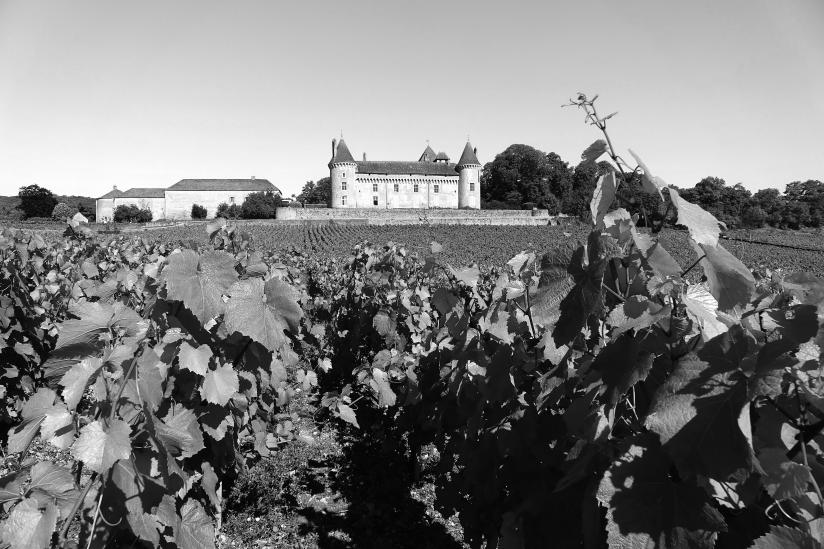
Sometimes you have to distrust a landscape. When you come to Rully from the south, after having crossed the superb and highly photogenic Mercurey hillsides, which are reminiscent of those of Beaujolais, one can be disappointed by discovering the classical alignment of most of the plots of Rully. Long slope that stretches eastward under the trees that crown the plateau. With a tidy and cushy side, but ultimately only the continuity of what is found in the richest more northern regions of the Côte de Beaune or Nuits. Casually, this continuity in the landscape is perhaps a visual asset for Rully, because it has a reassuring aspect for the amateur who has just visited two or three estates in Meursault or Pommard, he eventually run away, panicked by the first growths priced at 60 €. Arriving in Rully, just a few kilometers to the south, it is probably said that there is no reason that the wines are really worse here, as the physical differences of the landscape and the sun exposures are not obvious. ... And it would probably be interesting to organize a blind tasting between the best bottles of the best estates of Rully and some first growths of Volnay, Pommard or Chassagne-Montrachet.
Sparkling and wines of thirst
This image is even more negative given that another historical episode did not contribute to improve it. A few kilometers from Rully, was born in the middle of the nineteenth century an important industrial complex between the mines of Montceau-les-Mines and the iron and steel industry of Le Creusot. At that time, when hard physical workers did not drink only mineral water, they had to be supplied with easy-to-drink, low-alcohol red wine, and of course the most geographically close vineyards were the main suppliers of this low quality wine, especially Rully whose vineyard covered then more than 600 ha, twice more than today.
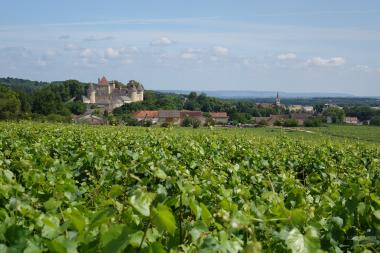
The return to quality
But one of the strengths of Rully, a little paradoxically compared to the above, is that even if the white color dominates, the name still offers a third of its production in red. This double entry is indeed almost unique in this geographical area: the appellations near, south of the Côte de Beaune are almost exclusively producers of white wines (Meursault, Puligny-Montrachet and Chassagne-Montrachet) and its neighbors of the Côte Chalonnaise are mostly focused on red wines, 90% in Mercurey and 85% in Givry, or exclusively "white" like Montagny. The amateur will be able to find his happiness in Rully, with wines of a quality level quite comparable in both colors, in a single winemaker whose style he appreciates. All in a price range from 15 to 25 €.
Rully, from today to tomorrow
If the wines of the 2013 vintage, tasted at first, gave us a somewhat austere and severe image of the appellation (but in the opinion of all the winemakers met next, it is a vintage that will evolve rather favorably towards the delicacy), those of the 2015 vintage, tasted by our committee at the beginning of July, have obviously offered us an entirely different approach. Balanced whites (despite the solar richness of the vintage), with personality and sometimes a real character of terroir, and fruity reds, fine, fairly easy and delicate, with probably slightly less character than the best whites. As much for the 2013 as the 2015, we often felt that the wood ageing were flirting with the upper limit, and these are, in both cases, still very young wines, this light woodland having to blend easily with a few years more. It is also true that in Rully, as in many appellations that push a little of the pass to try to play in the same yard as their more prestigious neighbors, it was long thought that it was enough to drink with generosity the wines for they look bigger. Parker, what crimes were committed in your name! Among the best producers, this is certainly no longer the case, and the proportion of new wood on farms does not exceed 20% or 25% for them, and exceptionally 30% for reds and whites. Perhaps it would be necessary to simply adjust the heating of the barrels towards more delicacy still?
On the side of the winemakers, if we can not talk about spectacular renewal (there are few newcomers, David Lefort remains an exception), a new generation is still emerging little by little at the head of several areas. Even though he still looks very young, Vincent Dureuil can no longer claim this role, but in the other flagship area of the appellation, Jacqueson, this is the case with Marie since ten years and especially with his brother Pierre, who arrived at the estate in 2015. We find these new heads, all from families or local estates, in several other areas of Rully, whether sons, brothers coming to join the family properties or winemakers who previously used to sell their bulk production to wine trading and now settled on their own. Marginally, even new owners put at the controls a young team (like Charles Nebout at Domaine Belleville). Others include: Erell Ninot and his brother Flavien at the eponymous domain, Sylvain Ponsot, Rémi Dury (who took over from his father Jacques), Félix Debavelaere (at the Domaine des Rois Mages) and Jean-Baptiste Ponsot. Almost all are in their thirties or so, and they bring new ideas, as well as a stronger sensitivity to the respect of nature, and finally they also undoubtedly better share their experiences than did their elders. A rather cohesive group, who discusses and exchanges in order to progress. The commercial success helping, no doubt that Rully, strong of its two "locomotives" (Dureuil-Janthial and Jacqueson) and this dynamic group, come "tickling" a little more strongly in the near future the prestigious neighbors appellations, in particular those of the Côte de Beaune.
The estates that we selected
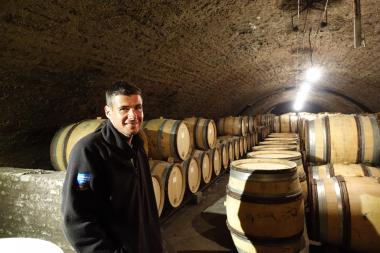
Domaine Vincent Dureuil-Janthial
The vines are cut in simple Guyot, but as soon as he can Vincent moves to Guyot Poussard pruning to better fight against diseases of the wood (on this question, see the interview of François Dal available in the technical package). The new plantations come from mass selections. He started his conversion to organic in 2005 and was certified in 2009. On this subject, inevitably comes the question of stopping bio in 2016. Vincent has still not recovered from this complicated decision, even if he resumed the conversion at the end of 2016: "In 2016, 50% of my vineyard froze at the beginning of the year. And very quickly, in the spring, we saw the arrival of a rather virulent mildew with cold and wet weather. I was really afraid that my entire crop would be destroyed. Around me everyone advised me to treat, even organic friends like Sylvain Pataille. I could not take a decision calmly and I ended up spending twice a treatment product that was then authorized in Germany, but not in France ... The worst thing is that the weather came back to beautiful conditions soon after and that I could have avoided all that! I consider this period as a personal failure. I regret that for a small gap we have to start from scratch for certification, but it's like that ... "
The harvest is obviously manual, the sorting very neat (vibrating table) and, for the red, the grapes 100% destemmed are then put in vat where they are cooled to 6 ° so that they do not begin their fermentation (in indigenous yeasts) before the end of the white grapes harvest. They spend about ten days in the cold, followed by twenty days of fermentation with pigeages and pumping controlled by the daily tasting: there is no rule. The tasting also determines the moment of the racking and the wines are left a week in the air "to teach them the oxygen", as the wine grower says it nicely. The aging is done in barrels (1/3 of new) for twelve months then in stainless steel tanks for six months. Bottling takes place just before the spring solstice.
The whites are pressed whole, without crushing and the press lasts a long time (3h30). The juices stay 24 hours in the cold and are then decanted (without enzymes or bentonite) and put in barrels. The ageing is the same as for the reds, but the proportion of new barrels is only 20%.
The production of the domain is of a homogeneity and a quality which, like the winemaker, force the respect. It seems clearly a notch above, for the moment, from the rest of the appellation. The woody farm is of quality and rightly emphasizes extracted materials without any excess and with a very nice grain of tannin in the reds. This is obviously not a revelation, but a confirmation: Vincent Dureuil is one of the most sensitive winemakers in Burgundy. For the proposed quality, the prices at the estate remain of an exemplary wisdom.
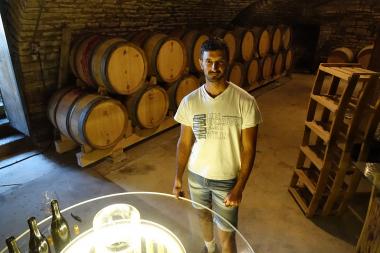
Domaine David Lefort
Nothing predestined a priori David Lefort to become a winemaker. His father was not at all in the vineyard (he was a carpenter) and the young David had gone on a university course that he pushed to the aggregation (but did not get it). But, on a personal inspiration, he also obtained a Master "vine, wine, soil" in Dijon. As part of this training, he does an internship at Clos de Tart. Previously, he had worked during his vacation in an estate in Mercurey. He decides to devote himself to the vineyard. He moved to Rully in 2010, but paradoxically his first vines are in Mercurey where he bought a little less than two hectares, exclusively planted in Pinot Noir. In 2013, he recovers in renting two hectares of Chardonnay in Rully in the name "village", 22 ares at a place called La Chaponnière and 1.69 hectares of climate La Chaume, which will be completed in 2014 by one hectare at a place called Les Pebbles (30 ares of Chardonnay and 70 of Pinot Noir). Today, he works about 5 ha. Viticulture is organic (biodynamic trend) since the beginning, but the official conversion started in 2015. Soils are worked slightly, the vines are grassed, the pruning is in Guyot simple and the trimming has been abandoned. After manual harvesting, the reds (at least in Rully) are vinified with 40 to 60% of whole crop. Natural yeasts, macerations of about three weeks, the extraction is intuitive, but with relatively few manipulations (some pigeages or pumping at the beginning of fermentation). The ageing takes place in barrels with 20% new barrels for generic appellations and 30% for first growth. It lasts twelve months with, at the end, a month and a half in mass in stainless steel tanks.
For whites, the grapes are pressed quickly (cooled by dry ice if necessary), the settling takes place fairly quickly afterwards and the juices are sung in stride. The aging also lasts twelve months with an average proportion of 20% new barrels of a very light heat. In 2014, the new cuvée Les Cailloux was exceptionally entitled to 60% new wood, always a light heat. Whether for whites or reds, sulfur is used at low or very low doses (only 30 mg / l of total for example in 2013, a little more in 2014).
David Lefort is a bit of a special case in Rully and even in all of Burgundy, because he claims to be from the "natural" school, even if he does not particularly want to be assimilated to fashionable winemakers in the "nature" wine bars of Paris. His approach is nonetheless quite singular for Rully or Mercurey: its wines contrast with the rest of the appellation, because sometimes a little less easy to approach than the more "traditional" productions. He especially has a clear margin of progression, because he still has a lot of work to do to restore his vines "level" (replacement of missing vines in particular), which is frequently the case when one settles on an appellation . He estimates that he will have arrived there in 2020. Appointment to take to follow the evolutions of this promising estate.
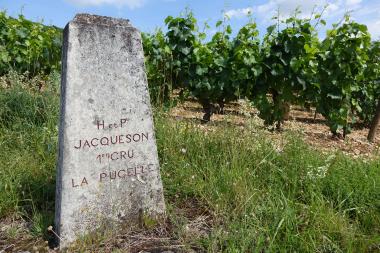
Domaine P. et M. Jacqueson
When you do not know the Domaine Jacqueson, you can be surprised by discovering the imposing new buildings where it settled a few years ago, succeeding a trading house. Its image of old traditional domain would rather have imagined old vaulted cellars nested inside each other under the borough of Rully. Once inside, we understand better the concern of the new generation of Jacqueson, Marie, since 2006 and his brother Pierre, arrived in 2015 (after starting his career as a French teacher), to have a functional tool and comfortable to work efficiently the many different wines of the property. Marie, having narrowly missed the difficult entrance exam to the school of police commissioners, ended up feeling it as obvious to return to the family domain at the moment when her father began to look for a buyer.
Paul, the father, was of course delighted at the return to the fold of his daughter. He quickly left him in charge of the estate, happy to retire to devote himself, among other things, to his passion for the mountains, even if he remained, of course, a privileged advisor. Marie's attention was focused on maintaining the level of quality for which the estate has been known for decades. She has not revolutionized anything, because the estate was already on good track for a long time, but she especially introduced a more sophisticated and modern set of tools in the vines and a softer way to produce its reds, by triturating less the grapes thanks to adapted facilities.
For Rully, the Domaine Jacqueson is distinguished by its significant production of reds (55%, while the appellation turns around 35%) and this since its creation in 1946. It is especially Paul who planted a lot of chardonnay, at the beginning of the nineties in particular, following the purchase of the plot La Pucelle on a very calcareous soil. Today, the estate has 17 ha, including 10 in Rully, 6 in Mercurey and 1 in Bouzeron appellation. He owns 80% in property, the remaining 20% being rented. According to Marie, the work in the vineyard is more and more "clean", but without being organic (for example it no longer uses antibotrytis).
For the vinification of the reds, the grapes are destemmed to 100% and, if the sanitary condition allows it, the estate practices a cold maceration of four or five days in a cellar cooled to 8 °. Vinification is done in stainless steel vats for about a month with enough pigeages at the beginning before gently simmering. The juices are then filled in barrels, the proportion of new barrels (25%) being the same for the appellations villages or premier cru. At the end of July, the reds are racked before being put back in casks and the area then practices a collage with egg white per barrel. Two months later, the wines are bottled without filtration.
The whites are pressed directly and, after settling lighter than formerly, put in barrels for their alcoholic fermentation. The batonnage, stopped since 2007, was reintroduced again for the vintage 2016. The proportion of new barrels is of 20%. It is barrels of provenances very diversified, with a light heating "special white". Aligoté and Bouzeron are also aged in barrels, but without new oak. For both colors, the yeasts are indigenous and the malos are naturally made.
The change of generation seems to have changed nothing in the operation of the domain which remains the great reference of the Rully appellation (with Dureuil-Janthial), in a simple, direct and without darling style, to which it sometimes lacks the little emotional spark. The estate particularly cares for its direct customers (Marie spends a great part of her time in winter receiving her clients with admirable abnegation) by practicing extremely reasonable starting property prices, from 15 to 18 €, according to the cuvées, for the 2016 vintage.
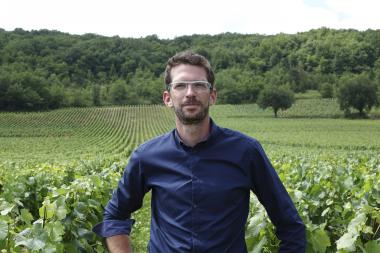
Domaine Belleville
If the recent history of the area has been quite choppy, it seems to be going in the right direction. Because this very large estate of Rully (it included about 45 ha) which belonged to the Belleville family, had great financial difficulties from the early 2000s. Difficulties that led the owners to sell their plots by "slices", the majority of which was purchased in the late 2000s by a Swiss family, the Dumont, who also owned a property in the Mâconnais and a small trading house in Meursault, the Murisaltien Manor. In May 2017, the set was sold to a couple of American investors, Mark Nunnelly and Denise Dupré, who, are also the owners for some years of the Leclerc Briant champagnes.
But the real renewal of the estate dates from 2011 with the arrival as manager of the very young Charles Nebout (he was then 24), responsible for viticulture and winemaking. With the means provided by the Dumont, he sets a priority: to restore the vineyard, while it was a little abandoned for many years. It is essentially to replant the parcels mited by many missing. Between 2011 and 2017, an average of 0.5 ha is replanted each year, with a peak of 1.5 ha in 2015. But the facilities are not neglected so far, and in 2014, the area includes brand new premises at the gates of Rully, vast buildings in which the work of winemaking can be done in excellent conditions.
The 22 ha of Belleville is divided between 45% of Rully, 45% of Mercurey, the remaining 10% dividing between Santenay, Gevrey-Chambertin, Chambolle-Musigny and Puligny-Montrachet. In Rully, the estate's production is 70% white (with five first growths) and 30% red (including a first growth). Now that the vineyard is "under control", Charles Nebout and his team will gradually change viticulture, most likely to organic; we can imagine that the arrival of the same owners as Leclerc Briant champagnes, which are biodynamic, will play in this direction. Today, three quarters of the plots in Belleville see no longer herbicides and there are no more uses of antibotrytis treatments. Soils are worked up to five times a year, but only on the surface by scratching. For the reds, the grapes are manual, but mechanical for the whites. The crop is severaly sorted and the grapes are totally destemmed for the red ones. The estate practices cold pre-fermentation to await the end of the harvest before starting the "real" vinification. The principle is to limit the interventions to the maximum and to concentrate on the monitoring and the tasting to judge the evolution of the reds in fermentation. In 2015, the team made up to three pigeages a day at the beginning of the fermentation, but only one in 2016. It is the tasting, again, that determines the time of the racking. Press juices are blended with free run juices. The reds are classically aged in barrels (25% new), twelve months for village appellations and sixteen months for first growths (in fact, twelve months of barrels and four months of vats). The whites are gently pressed, decanted after 48 hours, kept at a temperature of 12 ° before being put into casks (20% new) where the alcoholic fermentation begins. They spontaneously make their malo (except the 1er cru Les Cloux in 2015). The ageing lasts twelve months, except for the 1er cru Rabourcé which is entitled in addition to four months of tank. The wines are glued to bentonite (and rarely filtered).
Our tastings confirm the very important progress of the estate, whose whites obtained the best marks of our blind tasting with two first growths (Pucelles and Rabourcé) on the 2013 vintage. Belleville may not be a domain that responds totally to the demanding "specifications" of LeRouge & leblanc, but it produces very nice wines with the material, the drinkability and a character asserted on its different crus. And by discovering on the spot the objectives for the coming years and the winemaking tool to help achieve them, we can expect an even more significant increase in the quality of the wines elaborated here. A new visit in a few years will be required!
All you should know on the AOC Rully
- Harvesting grapes, winemaking, wine making and aging are provided in the communes of Chagny and Rully (Saône-et-Loire).
- Area in production: 345 ha including 220 hectares in Chardonnay (with 59 ha classified in Premier Cru) and 125 ha in Pinot (with 26 ha classified in Premier Cru).
- The average annual production is 10,400 hl of white wines and 5,300 hl of red wines.
Geology: limestone subsoil of the Upper Jurassic and Middle Jurassic marls. Soils: clay-limestone covered with gravel. The calcareous nature of the subsoil, combined with the dipping of the geological layers towards the east, generates relatively little diversified soils, clay-limestone. Superficial, rather dry and of a moderate fertility on the levels of limestone, they are deeper and benefit from a good water reserve, on marly levels. The parcels precisely delineated for grape harvest occupy mainly limestone or marly hillsides, exposed to the south and east and very locally to the west. The altitude of implantation of the vines is between 220 m and 300 m.
Grape varieties
The white wines are made from Chardonnay (main grape variety) and Pinot Gris (accessory variety)
The red wines are made from Pinot Noir (main varietal) as well as Chardonnay and Pinot Gris (accessory grape varieties).
Accessory varieties are allowed only as a mixture of plants in the vines and their total proportion is limited to 15% within each plot.
Main climats called "village":
La Bergerie, Les Crays, Maizière, Poirozot,
Les Cloux l’Ouvrier, Villerange, La Chaume, Monthelon, Les Fromanges, Plantenay,
Les Cailloux, La Chatelienne, Gaudoirs, Thivaux, La Barre, Rosey, Varot, Les Branges, Chaponnière, Gaudines, Chauchoux...
Climats classified as first growth:
Agneux, Chapître, Clos de Chaigne, Clos Saint-Jacques,
La Bressande, La Fosse, La Pucelle, La Renarde, Le Meix Cadot, Le Meix Caillet,
Les Champs Cloux, Les Cloux, Les Grésigny, Les Margotés, Les Montpalais, Les Préaux,
Les Pierres, Marissou, Molesme, Pillot, Raclot, Rabourcé et Vauvry.
- Maximum yield allowed: for whites, 60 hl / ha (58 hl / ha in first growth); for reds, 54 hl / ha (52 hl / ha in first growth).
- Minimum density at planting: 8,000 plants per hectare.
